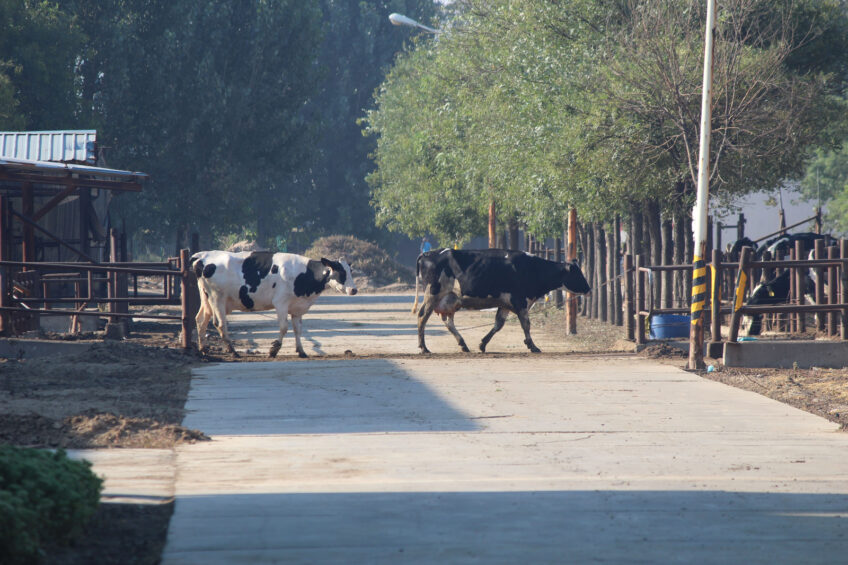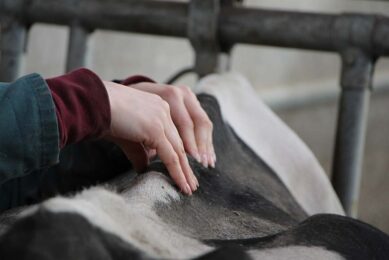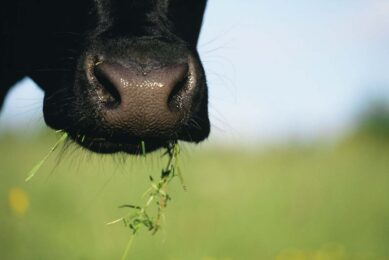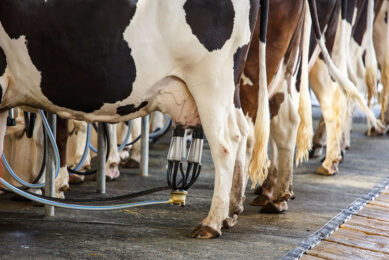Maintaining milk output for the masses in China

Milk consumption is on the rise in China, and at quite an alarming rate, but how can the country sustain enough production to meet demand? Dairy Global visited a dairy farm of Beijing Sunlon Livestock Development, where visions were shared for dealing with this problem.
In a country where both the population and economic growth have witnessed sharp rises, an automatic result is an increased demand for agricultural commodities; milk included.
China is a prime example of a country looking for ways to be able to sustain its food output to feed the emerging masses. First Farm, located 1 hour south east of Beijing in the Tongzhou district, is a dairy farm doing its best to meet this demand. The farm is owned by Beijing Sunlon Livestock Development Company. Formed in a joint venture between Beijing Capital Agribusiness Group (CAG) and Affinity Equity Partners, Beijing Sunlon, has operations in Asia and overseas and up until 2010 was one of the largest dairy farming companies in China.
The group currently operates 34 dairy farms in China, spread across 9 provinces, with a total of more than 80,000 cows. First Farm which produces milk under the brand name SanYuan is considered to be one of their middle-sized farms and provides for the expansive Beijing market. The farm, which currently employs 68 people including 20 professional technicians, was designed based on an Israeli dairy farm example, but as Yaqing Wang, general manager, explains, the farm has many influences. “We closely follow developments in the Netherlands and the US amongst many other countries, and we also have professional insights from many academic individuals who have been schooled abroad. We have several members of staff with PhDs and veterinary educations including three Israeli’s.”
Milk output
The site, which was constructed in 2004 and brought into use in 2005, currently houses 2,300 cows of which 1,200 are used for milking. The farm uses 2 types of cows, Holstein and Jersey, with the latter being the smaller category with just 100 cows. “The Jerseys produce less milk, but this is of a better quality,” Chong Ma, veterinary milk quality director, explains. The current milking output at the farm is 31 kg per cow per day, with the cows being milked for 12-15 minutes three times a day by the 5 dedicated staff in the milk parlour.
“We try very hard on the farm to ensure good milk quality, we meet high standards and have recieved certificates, including the globally recognised GAP certificate,” says Ma. “All staff follow the standard step-by-step procedures which are carried out in other countries. Also the feedstuffs are tested for mycotoxins, for instance aflatoxins. Then there is a control of mastitis at milking, especially for the Jersey cows. If we find something, these cows are taken out of the large group in the milking parlour and antibiotics are administered. The milk quality is then tested, if this is OK, then the cows can go back into the group.”
At the farm a raised glass corridor walkway allows visitors an overview of the 138 ha (340 acres) of land which houses the 11 cow sheds and the milking parlour. The further infrastructure of the farm includes 180 calve islands, 3 total mixed ration (TMR) mixers and 2 disinfection vehicles. However, what seems like a large facility the output barely scratches the surface of what is needed of the product.
Domestic milk dilemma
In a country where domestic milk consumption has risen to 30 kg per year from 7 kg per year in just a matter of years, the capabilities need to be in place to meet the growing demand. As Wang sees it there are three ways to solve the problem. Firstly, one solution is to enhance the average output of milk on each dairy farm currently in operation. Here there is a lot to gain, Wang says. At First Farm the milk output per cow per year is 10 tonnes whereas the national average, and indeed at other farms of the CAG group, this is substantially lower. If every farm were to raise their standards with improved infrastructure, management and technology, the milk output per farm could be a lot higher.
Another solution would be to build more dairy farms, however, as Wang explains, “The problem in China is that not a lot of land is suitable for dairy farming, and the most suitable land is already in use.” Also, it is very expensive to produce milk in China compared to other countries because the dairy farms do not own the land where their farms are located, instead the land is rented. This is then calculated into the cost of production. In value terms this means that the cost per kg of milk produced on First Farm is 3.5 RMB (€0.46), whereas in Europe on a farm of a similar scale this would be 2 RMB (€0.26). “This is an area where Chinese milk producers would never survive on a competitive export market,” Wang explains.
The third solution to meet the growing needs of the domestic market is to import milk from other countries. New Zealand and Australia are considered the most likely to profit from this gap in the market. At First Farm, the feed, notably alfalfa is imported from Australia or bought in from elsewhere in China. Importing feed is commonplace in the country, as it struggles to produce enough feed for its growing dairy herds. This makes production even more expensive, so taking this into account milk imports are considered an easy and affordable solution.
But as Beijing Sunlon has proven, expansion can be fast, safe and through modern production practices it is capable of boosting the efficiency of milk output. Despite the efforts at First Farm, however, a lot needs to be done in China to bridge the gap between growing consumption and a capable domestic network of facilities to meet this demand.
Join 13,000+ subscribers
Subscribe to our newsletter to stay updated about all the need-to-know content in the dairy sector, two times a week.












